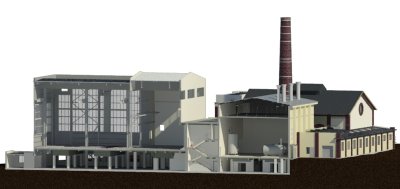Information modeling is the process of creating digital building data that can be used throughout its lifecycle. It is a 3D model, a database of information and processes that connect everything. BIM should be used during each stage of the building.

Passporting to BIM
At G4D, we convert the entire existing building from a point cloud from laser scanning to a BIM model for our clients. We also provide them with software in which they can continue to use their data. The advantage of passporting is that we scan actual 3D buildings. Therefore, it is a direct offer to carry out the digitization in 3D. Converting spatial data one level down to 2D is also possible, but from today's perspective a step into the past.
It is said that only ten percent of people have a spatial imagination and of these, eight percent are in the construction industry. So it is of great benefit to the investor if they can see everything in 3D. At G4D, we go even further. We show clients data in virtual reality, where they can literally touch the details.

BIM and TBE
We provide digitisation of technical building equipment, including wiring, sensors, motors and many other technologies. Benefits of an innovative 3D model include spatial coordination, easy orientation for maintenance, attaching documents or comparing models over time. The Common Data Environment (CDE) enables the acquisition of up-to-date information independently of the human factor, eliminating errors and possible misunderstandings.

Historic BIM
For historic buildings, it should be almost a matter of course to carry out continuous 3D scanning supplemented by an updated BIM model (HBIM - historic BIM). This allows you to see how the historic building behaves over time and whether there is a problem somewhere. The BIM model makes it easy to keep track of dates for revisions or needed replacements, and to record photographs or data from a Building Archaeology Survey.

Examples of BIM use
- Updated 3D construction documentation
- Conversion of existing 2D documentation to 3D
- Passport of the existing state of the building
- Building Management
- Information sharing between project participants
- Visualization
- Rights of light survey (ROL)
- Energy analysis
- Airflow analysis